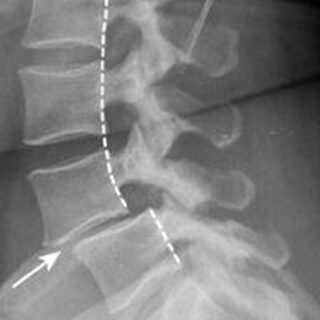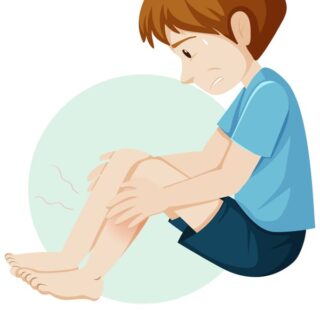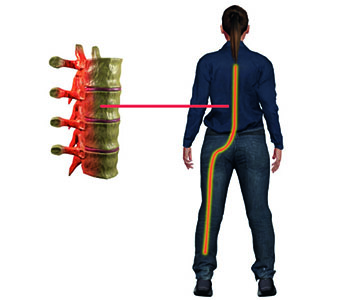Sciatica is a condition characterised by pain radiating along the sciatic nerve, which runs from the lower back, through the buttocks, and down the back of each leg. This nerve is the longest in the body and is responsible for providing sensation to the lower limbs. It can cause discomfort and a range of other symptoms when it becomes compressed or irritated.

Causes
A herniated disc most commonly causes sciatica in the spine. This occurs when the inner gel-like substance of a disc protrudes through the outer layer and presses against nearby nerves, including the sciatic nerve. Other potential causes include:
- Spinal stenosis (spinal canal narrowing).
- Spondylolisthesis (a condition where a vertebra slips out of place).
- A spinal injury.
Symptoms
Symptoms of sciatica can vary widely depending on the underlying cause and the location of the compression or irritation. In some cases, individuals may experience only mild discomfort or numbness; in others, the pain can be severe and debilitating. Some common symptoms of sciatica include:
- Sharp, shooting pain that radiates down the leg
- Numbness or tingling in the leg or foot
- Weakness in the leg or foot
- Pain that worsens when sitting or standing for long periods
- Difficulty walking or standing up straight


Diagnosis
Diagnosis of sciatica typically involves a physical examination and a review of the patient’s medical history. Imaging tests such as X-rays, CT scans, or MRIs may also be used to identify the underlying cause of the sciatic nerve compression or irritation.
Treatment
Treatment for sciatica typically involves a combination of pain management and physical therapy. Over-the-counter pain relievers such as ibuprofen or acetaminophen may be used to manage mild to moderate pain. In contrast, prescription medications such as muscle relaxants or opioids may be necessary for more severe cases.
Physical therapy is often recommended to help relieve pressure on the sciatic nerve and improve overall flexibility and mobility. This may involve exercises to strengthen the muscles supporting the lower back and hips and stretches to improve flexibility and reduce tension.
More invasive treatments may sometimes be necessary to relieve sciatic nerve pain. Injections of corticosteroids or other anti-inflammatory medications may be used to reduce swelling and relieve pressure on the nerve. Surgery may also be considered in cases where conservative treatments have been ineffective.
Prevention
Prevention of sciatica involves maintaining good posture and avoiding activities that put excessive strain on the lower back. Regular exercise and stretching can also help to strengthen the muscles supporting the spine and reduce the risk of injury or compression.

Sciatica is a common condition that affects the spine, causing pain and discomfort in the lower back and legs. It is caused by irritation or compression of the sciatic nerve, the largest nerve in the human body, running from the lower back down to the legs. This article will explore the causes, symptoms, and treatment options for sciatica.
